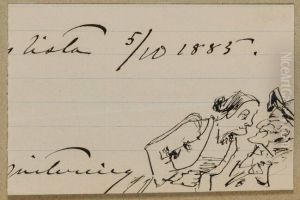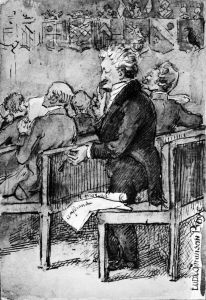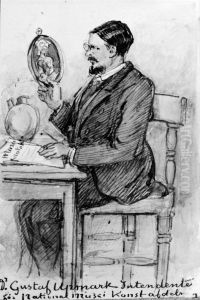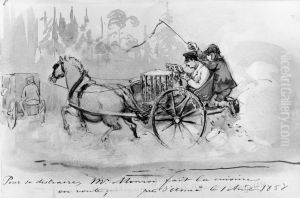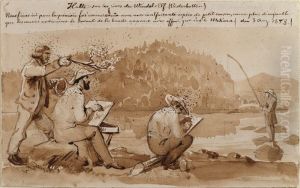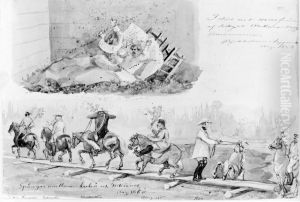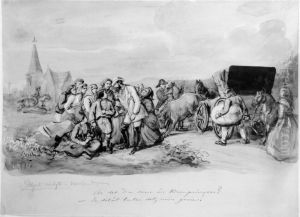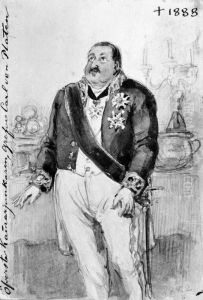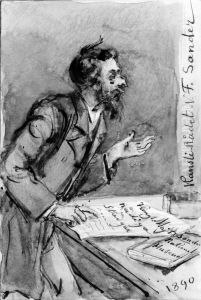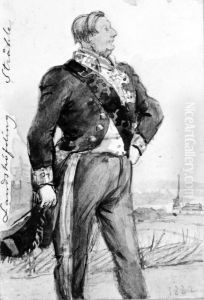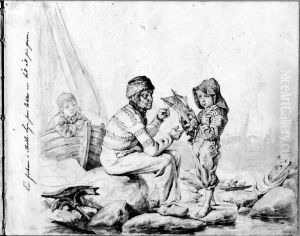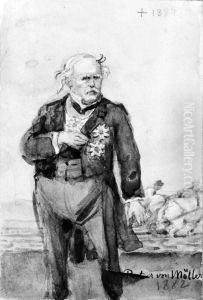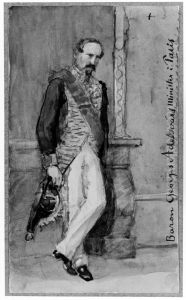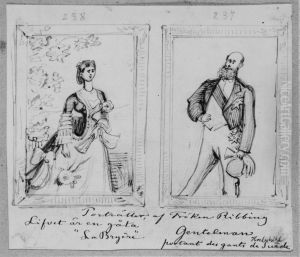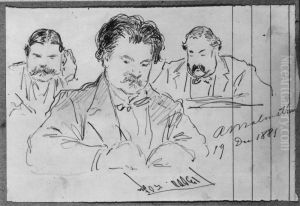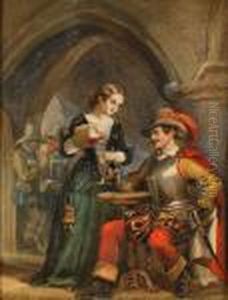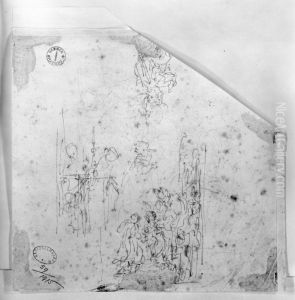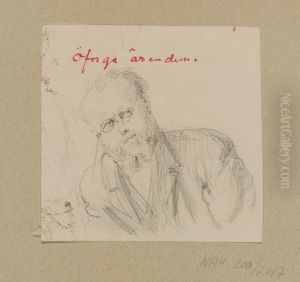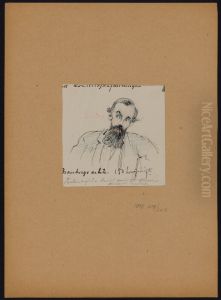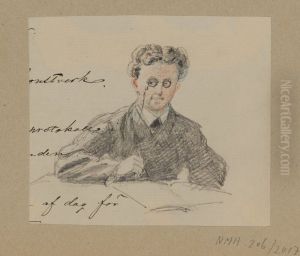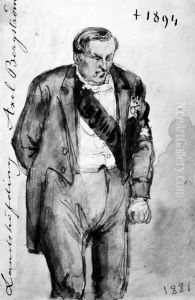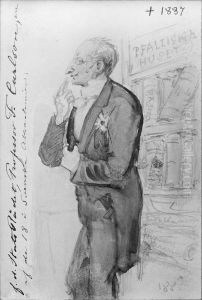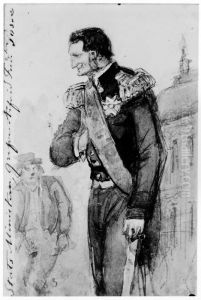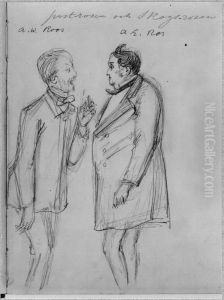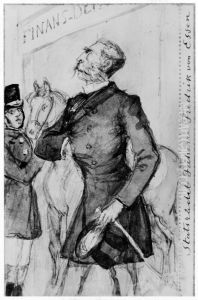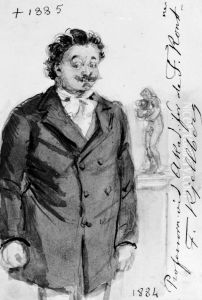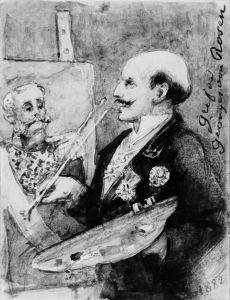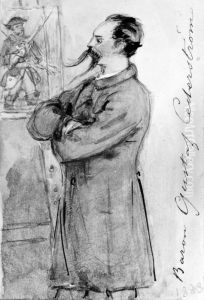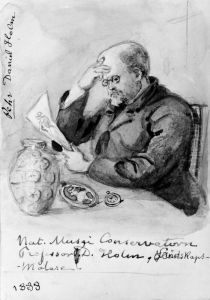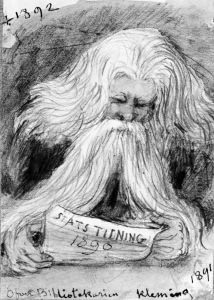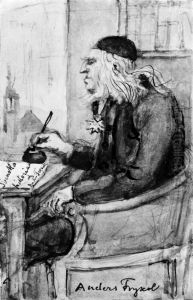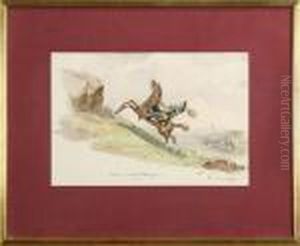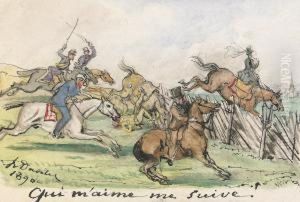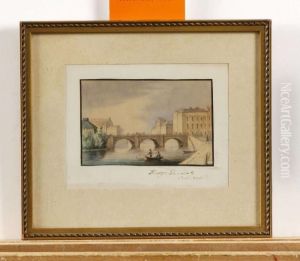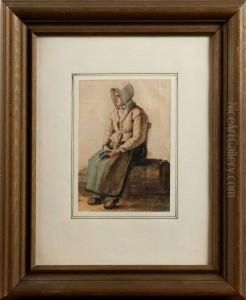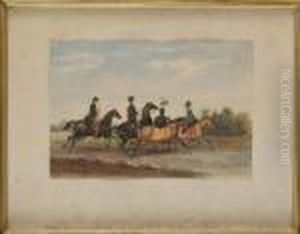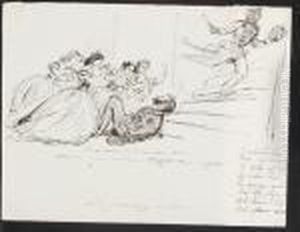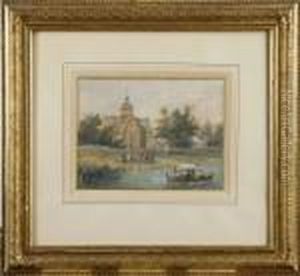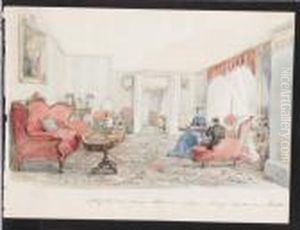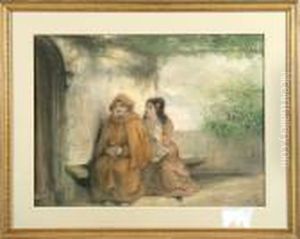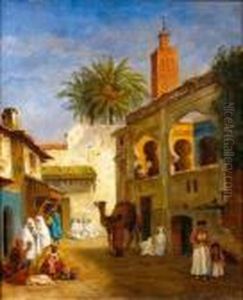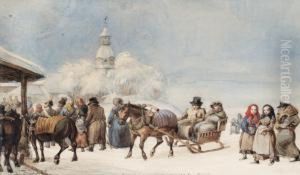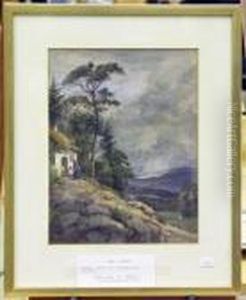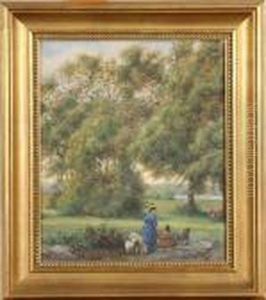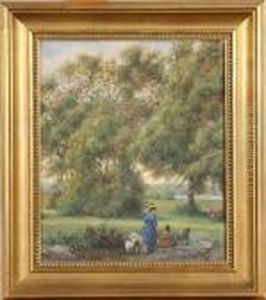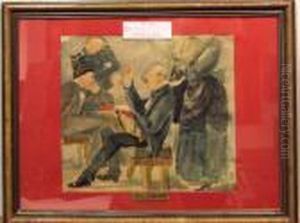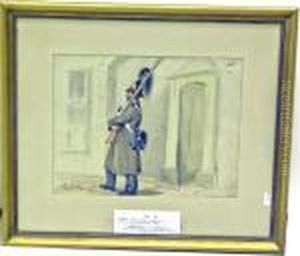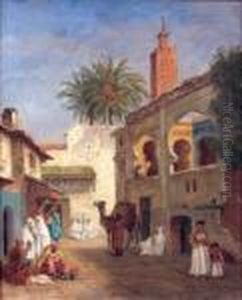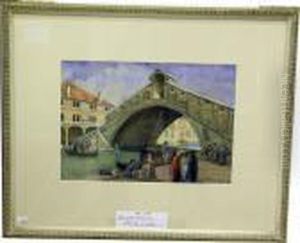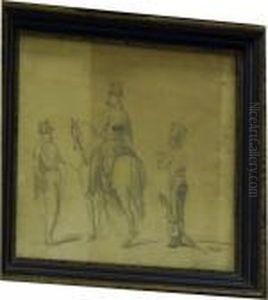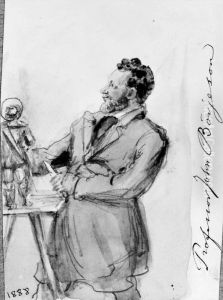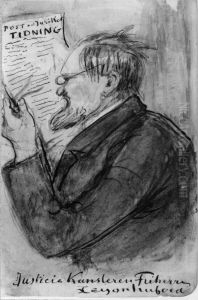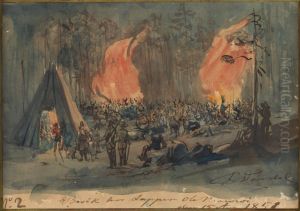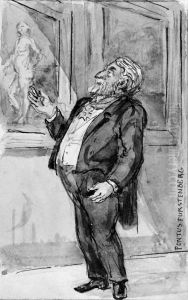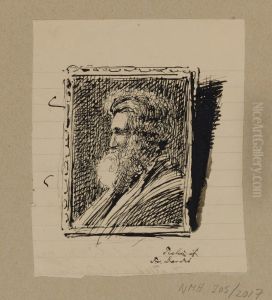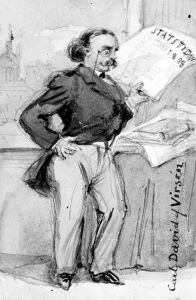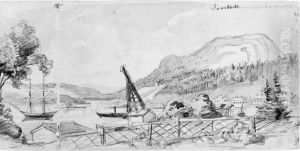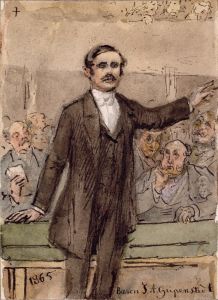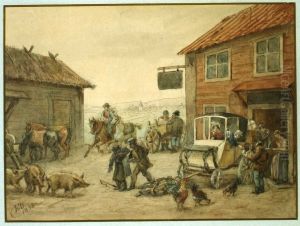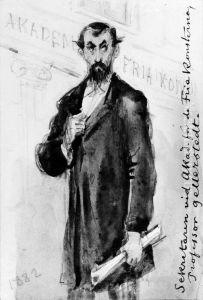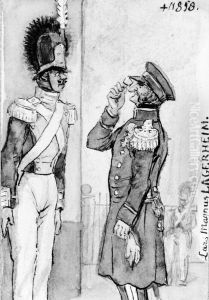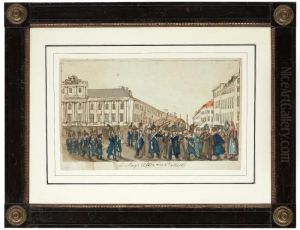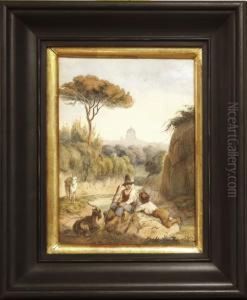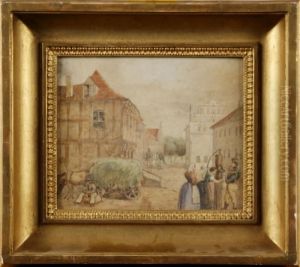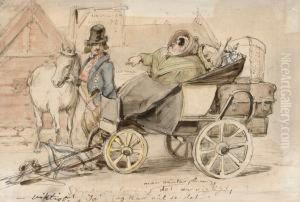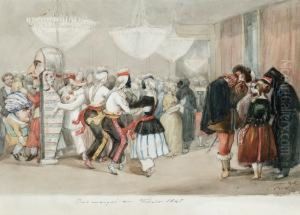Fritz Von Dardel Paintings
Fritz von Dardel was a Swedish artist, illustrator, and court official born on March 24, 1817, in Neuchâtel, Switzerland, to a Swiss noble family. His full name was Frederik August Ludvig von Dardel, but he is better known as Fritz von Dardel. His family moved to Sweden during his childhood, where he later became a naturalized Swedish citizen and served in various capacities within the Swedish royal court.
Dardel is particularly noted for his contributions to Swedish art and culture in the 19th century. He studied art in Geneva and Paris, honing his skills in drawing and painting. Dardel became well-known for his caricatures, which were published in various periodicals, and for his detailed diary sketches that offer insightful glimpses into the social and political life of Sweden during his time. His style is characterized by a keen observation of social manners and a light, yet precise, touch, capturing the nuances of Swedish aristocracy and the everyday life of the period.
In 1848, he married Augusta Silfverschiöld, with whom he had several children. This marriage connected him more deeply with the Swedish nobility and the royal court. Dardel's involvement at court increased when he was appointed as a gentleman of the Chamber of King Charles XV of Sweden. He was not only a close confidant of the king but also served as the master of ceremonies at the Swedish court, a position that allowed him to influence cultural activities and festivities significantly.
Throughout his career, Fritz von Dardel executed numerous commissions for the royal family and nobility, including portraits, landscapes, and decorative works. His illustrations are of particular historical value, as they document costumes, interiors, and events of the Swedish court with accuracy and detail. Dardel's diary, filled with personal observations, sketches, and caricatures, remains an essential source for understanding 19th-century Swedish society and culture.
Fritz von Dardel passed away on May 27, 1901, in Stockholm, Sweden. His legacy lives on through his contributions to Swedish art and cultural history. His works are preserved in several Swedish institutions, including the Nationalmuseum in Stockholm, highlighting his lasting impact on the artistic and cultural landscape of Sweden.
